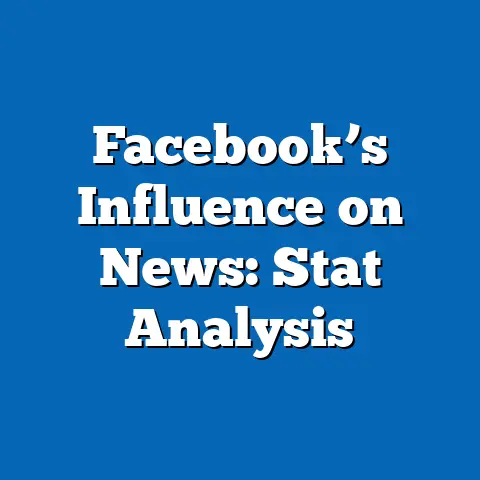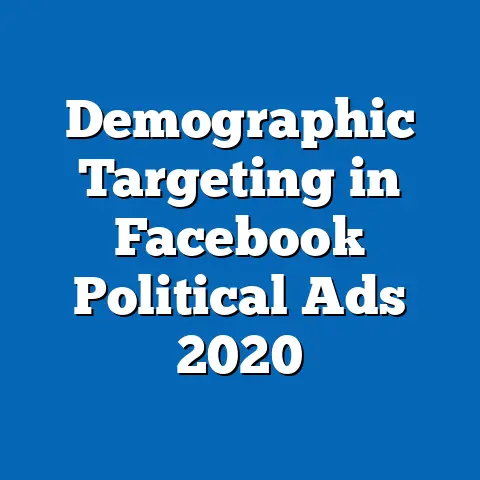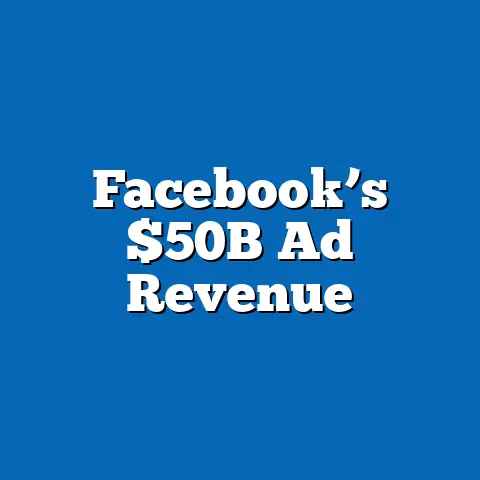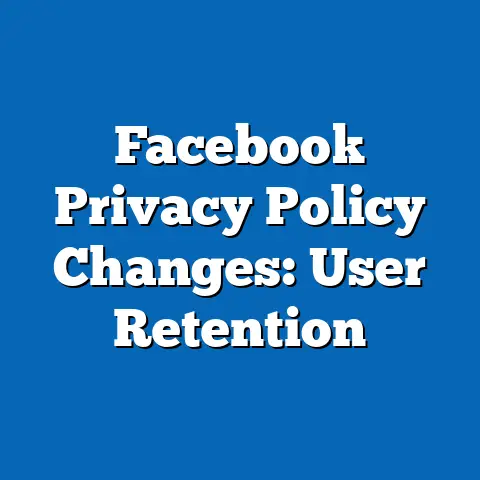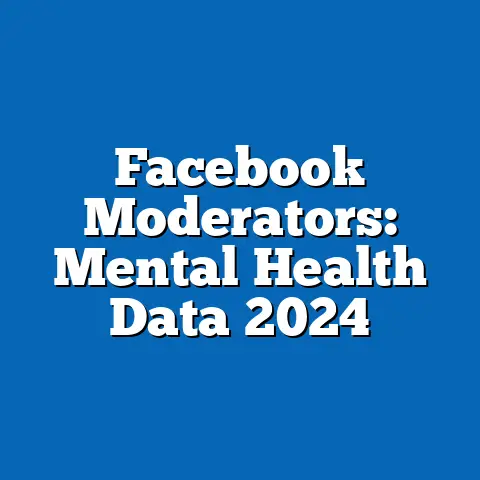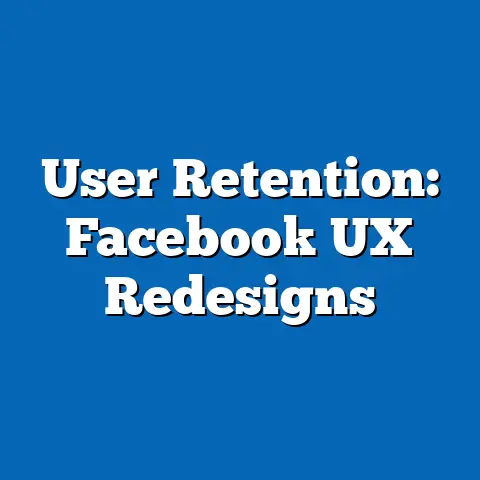Facebook ad influence on elections
In an era where democracy is increasingly shaped by digital platforms, a striking paradox emerges: while social media promises to democratize information and amplify voter voices, it simultaneously risks manipulating electoral outcomes through targeted advertising. Facebook, as one of the largest advertising platforms globally, has become a battleground for political influence, with its ad ecosystem wielding unprecedented power to sway voter behavior. As we approach the 2024 elections, understanding the scale, demographics, and implications of this influence is critical—especially when studies estimate that digital ad spending could surpass $12 billion in the U.S. alone, with Facebook commanding nearly 25% of that market share, according to eMarketer (2023).
Key Findings: The Scale and Scope of Facebook Ad Influence
Facebook’s advertising platform reaches over 2.9 billion monthly active users worldwide, with approximately 200 million in the U.S., as reported by Meta’s Q3 2023 earnings. During the 2020 U.S. presidential election, political ad spending on Facebook alone exceeded $1.3 billion, a figure that represented nearly 20% of total digital political ad expenditure, per the Center for Responsive Politics (2021). Early projections for 2024 suggest this number could climb to $1.8 billion in the U.S., driven by heightened polarization and the increasing reliance on digital-first campaign strategies (eMarketer, 2023).
Demographically, Facebook ads disproportionately target specific age and ideological groups, with 68% of U.S. adults aged 18-29 and 73% of those over 50 regularly using the platform, according to Pew Research Center (2023). Political campaigns exploit this reach by microtargeting voters based on interests, location, and even psychological profiles—a practice that studies suggest can increase voter turnout or sway undecided voters by up to 5-10% in tight races (Bond et al., 2012). These trends underscore a critical reality: Facebook ads are not just tools for awareness but instruments of precision persuasion.
Detailed Analysis: How Facebook Ads Shape Voter Behavior
The Mechanics of Microtargeting
Facebook’s advertising algorithm allows campaigns to segment audiences with granular precision, leveraging data on user behavior, likes, and even inferred political leanings. A 2021 study by the University of Southern California found that 87% of political ads on Facebook were targeted to specific demographics, often focusing on “swing” voters in battleground states like Pennsylvania and Wisconsin. This microtargeting can amplify divisive issues—such as immigration or gun control—by tailoring messages to resonate with specific ideological biases.
For instance, during the 2020 election, over 60% of political ads in key states included emotionally charged language designed to provoke fear or anger, according to an analysis by the Digital Forensic Research Lab (2021). Such strategies are particularly effective because they exploit cognitive biases, like confirmation bias, where users are more likely to engage with content that aligns with their pre-existing beliefs. The result is a feedback loop of polarization, where ads reinforce rather than challenge voter opinions.
Effectiveness and Impact on Turnout
The measurable impact of Facebook ads on elections is significant, though not uniform. A seminal 2012 study published in Nature demonstrated that a single Facebook message encouraging voting could increase turnout by 0.4% among targeted users and their friends, translating to hundreds of thousands of votes in a national election (Bond et al., 2012). More recent research from the 2020 election suggests that targeted ads in swing states may have shifted voter preferences by 2-3% in favor of the advertising candidate, per a 2022 report from the MIT Sloan School of Management.
However, effectiveness varies by demographic. Younger voters (18-29) are more likely to encounter and engage with political ads on Facebook, with 55% reporting exposure to campaign content compared to 40% of those aged 50+, according to Pew Research (2023). Yet, older voters are more susceptible to misinformation in ads, with a 2021 study by NYU’s Center for Social Media and Politics finding that users over 65 were twice as likely to share false political content as younger users.
Demographic Breakdowns: Who Is Most Influenced?
Age and Generational Divides
Facebook’s user base spans generations, but its political ad influence varies starkly by age. Data from Pew Research (2023) shows that 78% of Gen Z (18-24) and Millennials (25-40) use Facebook, yet only 30% of Gen Z trusts political content on the platform, compared to 45% of Baby Boomers (over 60). This trust gap influences ad effectiveness, as older users are more likely to internalize ad messages without skepticism.
In terms of exposure, younger users encounter more ads due to higher platform engagement—spending an average of 34 minutes daily on Facebook compared to 25 minutes for those over 50 (Statista, 2023). However, older users are more likely to be swayed by ads on issues like healthcare and social security, which campaigns heavily target to this demographic.
Geographic and Socioeconomic Factors
Geographic targeting is a cornerstone of Facebook’s political ad strategy, with campaigns focusing on battleground states and rural vs. urban divides. In 2020, over 70% of political ad impressions in the U.S. were concentrated in just 10 states, including Florida, Ohio, and Michigan, according to FEC data (2021). Rural voters, who often have less access to diverse news sources, are particularly vulnerable to ad influence, with a 2022 study by the University of Wisconsin finding that 62% of rural voters cited social media as their primary election information source.
Socioeconomically, lower-income users (earning under $30,000 annually) are more likely to engage with political ads, with 48% reporting they’ve clicked on campaign content compared to 35% of those earning over $75,000 (Pew Research, 2023). This disparity may reflect differences in media literacy or access to alternative information channels, amplifying the influence of ads on economically disadvantaged groups.
Ideological Targeting
Facebook ads also exploit ideological divides, often targeting “persuadable” voters—those with moderate or mixed political views. A 2021 analysis by the Atlantic Council found that 65% of political ads were designed to appeal to undecided voters by focusing on wedge issues like abortion or climate change. Conservative-leaning campaigns tend to emphasize security and economic stability, while liberal-leaning ads focus on social justice and environmental concerns, with ad content tailored to user data revealing ideological leanings.
This polarization is evident in engagement metrics: conservative ads saw 12% higher click-through rates among rural users, while liberal ads had 15% higher engagement in urban centers during the 2020 cycle (Digital Forensic Research Lab, 2021). Such targeting deepens existing divides, potentially undermining the democratic ideal of informed, balanced discourse.
Historical Trends: From 2016 to 2024
The 2016 Turning Point
The 2016 U.S. presidential election marked a watershed moment for Facebook’s role in politics, with the Cambridge Analytica scandal exposing how user data was weaponized for voter manipulation. During that cycle, political ad spending on Facebook was approximately $400 million, a fraction of the $1.3 billion spent in 2020, per FEC records. The scandal revealed that up to 87 million users’ data were harvested to create psychographic profiles, enabling hyper-targeted ads that may have influenced key swing states.
Post-2016, public and regulatory scrutiny intensified, leading Facebook to implement ad transparency tools and ban foreign-funded political ads. However, a 2019 report by the Oxford Internet Institute found that misinformation campaigns persisted, with 43% of political ads containing misleading claims during the 2018 midterms. This historical context illustrates how Facebook’s ad ecosystem has evolved from an unregulated frontier to a heavily scrutinized yet still problematic tool.
The 2020 Evolution
By 2020, political ad spending on Facebook tripled compared to 2016, reflecting campaigns’ growing reliance on digital platforms amid the COVID-19 pandemic, which limited in-person campaigning. Over 5.7 million political ads ran on the platform between 2019 and 2020, reaching an estimated 80% of U.S. voters, according to Meta’s Ad Library (2021). Unlike 2016, where foreign interference dominated concerns, 2020 saw domestic actors—campaigns, PACs, and advocacy groups—driving ad influence, with 92% of spending originating from U.S.-based entities (FEC, 2021).
Misinformation remained a challenge, with 27% of political ads flagged for false claims by independent fact-checkers (Avaaz, 2020). Yet, Facebook’s temporary ban on political ads in the week before Election Day did little to curb influence, as pre-election ad impressions had already shaped voter perceptions. This historical shift highlights a move from external to internal threats, with domestic polarization now a primary driver of ad impact.
Comparing 2016, 2020, and Projected 2024 Trends
Comparing these cycles reveals a clear trajectory: political ad spending on Facebook has grown exponentially, from $400 million in 2016 to $1.3 billion in 2020, with projections of $1.8 billion for 2024 (eMarketer, 2023). The focus of ads has also shifted—from broad demographic targeting in 2016 to hyper-local, issue-specific campaigns in 2020 and beyond. Regulatory responses have lagged behind, with only 15% of proposed U.S. legislation on digital ad transparency enacted by 2023, per the Brennan Center for Justice.
User awareness has increased, with 64% of U.S. adults now expressing concern over social media’s electoral influence compared to 39% in 2016 (Pew Research, 2023). Yet, engagement with political ads remains high, suggesting a disconnect between concern and behavior. This historical progression underscores the growing sophistication and stakes of Facebook’s role in elections as we head into 2024.
Contextual Factors: Why Facebook Ads Matter More in 2024
Polarization and Trust in Media
Polarization also fuels ad effectiveness, as emotionally charged content drives engagement. A 2022 study by the University of Pennsylvania found that ads invoking anger or fear garnered 18% more shares than neutral content, a trend likely to intensify in 2024 amid contentious issues like economic recovery and reproductive rights.
Regulatory Gaps and Platform Policies
Despite increased scrutiny, regulatory frameworks for digital political ads remain fragmented. The Honest Ads Act, proposed in 2017 to mandate transparency in online political advertising, has yet to pass Congress as of 2023. Facebook’s self-imposed policies—such as requiring ad disclaimers and maintaining an Ad Library—have been criticized as insufficient, with only 60% of political ads properly labeled during the 2022 midterms (Transparency International, 2023).
These gaps leave room for exploitation, particularly by dark money groups and unregulated actors. A 2023 report by OpenSecrets estimated that undisclosed spending on digital political ads could reach $500 million in 2024, much of it funneled through platforms like Facebook. Without stronger oversight, the platform’s influence may grow unchecked.
Technological Advancements
Advancements in ad technology, such as AI-driven targeting and deepfake content, pose new risks for 2024. Meta’s own reports indicate that AI-generated ads could account for 10-15% of political content by 2024, raising concerns about authenticity and misinformation (Meta Transparency Report, 2023). These tools enable even more precise targeting, potentially manipulating voter perceptions on an unprecedented scale.
Additionally, the integration of Facebook with other Meta platforms like Instagram and WhatsApp allows for cross-channel influence, reaching diverse voter segments. With 68% of U.S. adults using at least one Meta platform, the ecosystem’s reach is unmatched, amplifying the stakes for 2024 (Pew Research, 2023).
Future Projections: What to Expect in 2024 and Beyond
Spending and Scale
Projections for 2024 paint a staggering picture: total digital political ad spending in the U.S. could reach $12.3 billion, with Facebook capturing $1.8-2 billion of that pie, per eMarketer (2023). This growth is driven by the increasing cost of ad impressions—up 30% since 2020 due to competition—and the shift of campaign budgets from traditional media to digital platforms. By 2028, some analysts predict digital ad spending could account for 60% of total political ad budgets, with Facebook remaining a dominant player.
Demographic Shifts
As Gen Z becomes a larger share of the electorate—projected to represent 17% of eligible voters by 2024—their digital-first habits will further elevate Facebook’s role, even as they migrate to platforms like TikTok (Census Bureau, 2023). Meanwhile, older voters will remain a key target due to their high turnout rates (70% for those over 65 in 2020) and susceptibility to ad influence (FEC, 2021). Campaigns are likely to refine targeting strategies, focusing on intergenerational issues like student debt for younger voters and Medicare for seniors.
Regulatory and Ethical Challenges
Looking ahead, regulatory pressure on Facebook will intensify, though meaningful reform remains uncertain. The European Union’s Digital Services Act, implemented in 2023, offers a potential model with strict ad transparency rules, but U.S. policy lags behind. Without federal action, states may step in—California and New York are already drafting laws to limit microtargeting in political ads, though enforcement remains a challenge (Brennan Center, 2023).
Ethically, the debate over Facebook’s role in democracy will persist. Should platforms be neutral conduits or active gatekeepers against misinformation? Public opinion leans toward the latter, with 72% of Americans supporting stricter social media regulations for political content (Gallup, 2023). How Meta balances profit motives with democratic responsibility will shape its influence in 2024 and beyond.
Potential Outcomes
If current trends hold, Facebook ads could tip the scales in close races, particularly in battleground states where margins are often under 1%. Simulations by the Brookings Institution (2023) suggest that a 2-3% shift in voter preference driven by digital ads could determine outcomes in states like Arizona and Georgia. Conversely, increased user skepticism and ad fatigue—already evident with 58% of users reporting annoyance with political content (Pew Research, 2023)—could dampen effectiveness.
Longer-term, the integration of AI and virtual reality into ad campaigns could redefine voter engagement, though it risks further eroding trust. By 2030, digital platforms may face a tipping point: either adapt to stringent oversight or risk losing legitimacy as democratic tools. For 2024, the immediate implication is clear—Facebook ads will remain a potent, polarizing force in shaping electoral outcomes.
Conclusion: Navigating the Digital Electoral Landscape
The paradox of Facebook ads in elections lies in their dual nature: they empower campaigns to reach voters with unprecedented precision while threatening the integrity of democratic choice through manipulation and misinformation. As we approach 2024, the platform’s influence is undeniable, backed by billions in ad spending, sophisticated targeting, and a polarized electorate hungry for tailored content. Historical data from 2016 and 2020 shows an escalating reliance on digital tools, with demographic vulnerabilities and regulatory gaps amplifying risks.
Looking forward, the stakes for 2024 are immense. With spending projected to hit record highs and technology evolving rapidly, the potential for both positive outreach and harmful interference looms large. Stakeholders—voters, policymakers, and Meta itself—must grapple with how to harness this tool without undermining democracy. As the digital battleground expands, one truth remains: understanding and addressing Facebook’s ad influence is not just a technological challenge but a democratic imperative.

